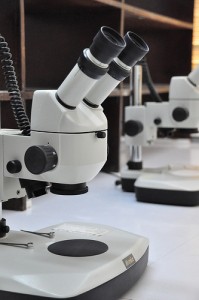Find Good Schools Using Data - Part Two
24 September 2012
“You’ll love this expensive neighborhood. It has great schools” - Every Realtor, ever
Maybe.
This is the second blog post analyzing the quality of schools using data. In the last post we identified a key success metric and saw the quality of schools. Now we’ll ask: Are good schools always in expensive neighborhoods?
WARNING: Correlation != causation. We’ll see correlations between housing prices and school quality. This does not mean school quality changes because of the price of a house. Children don’t become better students because their bedroom has fancier paint.
HOUSE PRICES
When parents buy a house, a ‘good neighborhood’ means ‘near good schools’. Parents will spend as much as they can afford to be near a good school. Let’s see if it’s a good idea to spend more; below is a graph of schools’ High Achiever % compared with house prices.
There is a rough trend where school quality increases as house prices increase. Let’s see how much of a trend there is. A little linear math (least squares’ regression) produces this equation.
High Achiever % = Median House Price * 0.0000002439 - 0.0274391
R^2 = 0.259, SSE = 0.818, MSE = 0.00223, p-value = < 0.0001
An R² value of 1 means two variables are perfectly correlated. An R² value of 0 means no correlation. Here there is a correlation of 0.259. The p-value is very small (less than 0.05), meaning that the linear regression is probably significant. So, we’re not grasping at straws.
We’re interested in schools with a high High Achiever % that is not due to house prices. This is also known as the residual.
High Achiever % Not Due To House Prices =
High Achiever % - High Achiever % Due to House Prices (equation)
This is the same data as above, except without the influence of house prices. Here we can see which schools are good deals; they have positive values.
For example, Mercer Island high school has a 16% High Achiever value, which is quite good. However, it is a very low score for the cost, because the median house costs over $1 million. Therefore its residual value is negative (it’s not worth the price). In contrast, Friday Harbor high school has a 27% High Achiever value, with a median house price of around $360K. It’s a far better deal.
Parents could use this data to make informed decisions about where to move. For example, we can see that houses over $400K don’t provide much (if any) additional improvement in school quality.
Rent Prices
What if we want to rent, instead of buying? Let’s look at school quality compared to rent price:
There is a correlation between rental prices and school quality. More linear math, and we find:
High Achiever % = Average Rent * 0.0001197 - 0.0684526
R^2 = 0.247, SSE = 0.724, MSE = 0.00282, p-value = < 0.0001
There is still a correlation, but it’s weaker compared to house prices (an R² value of .247 instead of .259). Still, we can use the linear equation to plot the residual, looking for good deals:
The correlation (R²) between rent and school quality is weaker than between house prices and school quality. There are more potential deals when renting instead of buying.
The Takeaway: Don’t assume schools are better because they’re in a pricier neighborhood; that’s not always true. And consider renting instead of buying.
What’s Next
Sometimes we don’t have to dig too deeply. This basic level of analysis is sufficient for parents on a budget.
However, there is a lot more insight in this data. In the next post we will look at which factors influence school quality. Stay tuned for more data!
PermalinkFind Good Schools Using Data - Part One
17 September 2012
This is the first in a series of blog posts analyzing the quality of schools using data. I’ll go over how to identify a good school, and what factors influence the quality of a school. Finally, I’ll test some common wisdom rumors to see if they are accurate.
Background
“The mind is not a vessel to be filled but a fire to be lit” - Plutarch
Parents care about their children, and sacrifice to help them advance in the world. One of the biggest expenses is putting their child into a good school, often by moving near one. They believe, rightly, that a great education enables their children to fulfill their potential.
Unfortunately, there is no simple way to find a good school. Parents gather what information they can from family, friends, ‘top 100’ articles, etc. Let’s use data instead.
What is Success?
What is the definition of a good school? A good school teaches children to identify and achieve their goals in life. That means a school will instill confidence, fluid intelligence, street savvy, and a broad base of knowledge in its students. Sadly for data scientists and analysts, these traits are hard to quantify.
Let’s use a narrower definition: a good school is one that prepares students to successfully complete college and start a career. A study by the US Department of Education found that intense classes are the best predictor of college completion. These classes are often called Advanced Placement, International Baccalaureate, or Honors classes. We can use AP test scores and counts as a metric to measure the quality of a school.
A good school should exhibit the following behavior:
- A high percentage of students that take an AP test do well, and receive a good score.
- Students take several advanced classes, not just one. This is a sign of intellectual breadth as well as depth.
- A high and/or increasing percentage of students take advanced classes over time. The school is improving over time.
Show Me the Data!
Now that we have our goals, we need data! I collected data for every school in Washington state. This includes AP test counts, scores, SAT scores, school budget information, teacher counts, and teacher evaluations. However, people are influenced by their environment. I have also collected neighborhood data for school zip codes covering factors such as crime rates, parents’ education levels, urban density information, and so on. This gives us 655 high schools to use for our analysis, with over 30 variables for each school.
Let’s start with the obvious question: which schools are the best in the state? I have defined a single metric that defines success: High Achiever %. It is the percentage of students in the school that take an AP test _and _achieve a good score in the test.
We Have A Winner
At the very top is Newport High School , which sends 52% of its students to AP tests, and 79% of them achieve a good score, for a High Achiever % of 41.2%. The runner up is Interlake High School, which sends 48% of its students to AP tests, and 77% achieve a good score, for a High Achiever % of 39.6%.
It is not clear why those schools are the best. It’s also not clear whether they are the best for the price, since they are in very expensive neighborhoods.
There’s a lot of variation there, but you can see that different schools have dramatically different High Achiever % values. Let’s look at the data a little differently: by measuring High Achiever % and Tests Per Student independently. Ideally a good school would have both.
As we can see here, there appears to be a relationship between High Achiever % and Tests Per Student. That makes sense; a school that can educate its students extremely well in one subject is likely to do so in multiple subjects.
In the next post, we will look at the relationship between a school quality and income. Are good schools always in expensive neighborhoods? Find out!
Permalink

